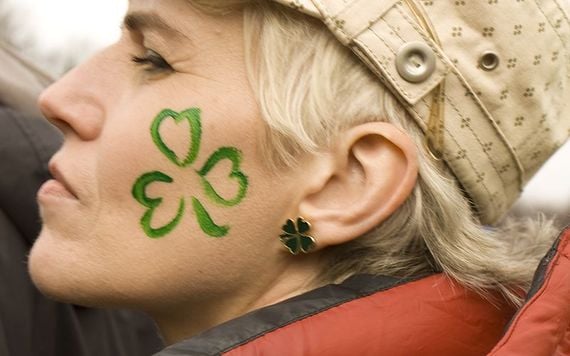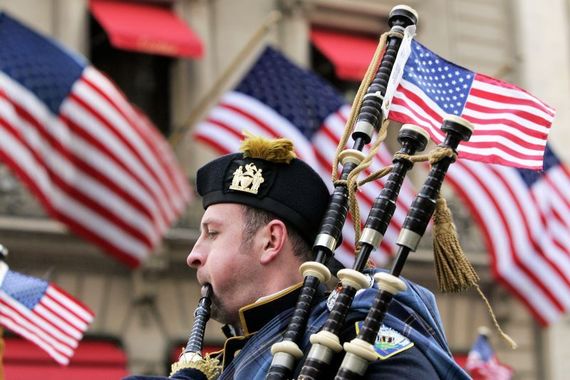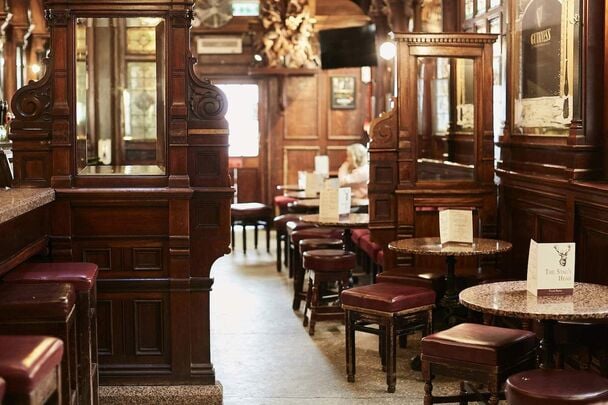What days are the pubs closed in Ireland? Well, it used to include Saint Patrick's Day.
You may be surprised to learn that all the pubs in Ireland used to be closed on St. Patrick's Day, which is now by and large considered a drinking holiday.
St. Patrick’s Day is associated with many things: wearing green, breaking Lent, making an attempt to try out your cúpla focal (few words of Gaelic/Irish), going to a parade and, of course, drowning the shamrock. There is no other day in the year in which the drunken Irish stereotype is more pronounced and used as an excuse by some to enjoy themselves a bit too much than on March 17.
In Ireland, March 17 marks the death of the country's beloved patron saint and, for over a thousand years, it has been celebrated as a religious feast day.
Up until the 1970s, Irish law prohibited pubs from opening on March 17 as a mark of respect for this religious day. It was feared that leaving the pubs open would be too tempting for some during Lent and would lead to a disrespectful amount of drunkenness on this most solemn day.
According to history, St. Patrick was a missionary to Ireland. If we look back to his writings, we find that he believed his enslavement in Ireland was a result of his lack of faith during his younger years, and his return to Ireland following his escape from slavery came from a compulsion to spread the word of God to Ireland and repent for these sins. He stature grew until he was adored by the Irish as the person who brought Christianity to the Emerald Isle.
Read more
In times gone by, canonizations were carried out on a regional level, meaning that Patrick has never officially been canonized by a Pope, although he is included in the list of saints. The feast day was only officially placed on the Catholic Church’s liturgical calendar in the early 1600s, thanks to Waterford-born Franciscan scholar Luke Wadding. Since then it has been a holy day of obligation for Ireland's Catholics (obliged to 'hear Mass').
Until the 1700s, St. Patrick’s Day was celebrated predominantly in Ireland, where it was a somber religious occasion spent mainly in prayer.
From the 18th century onward, as a result of the Penal Laws in Ireland, some Irish people began to use St. Patrick’s Day as a means of promoting Irish culture and tradition. So as to show their Irish Christian pride, the tradition of wearing of shamrocks began, but the day still revolved around the Catholic rites.

St. Patrick’s Day didn’t become an official Irish public holiday until 1903 with the introduction of the Bank Holiday (Ireland) Act 1903. This act was introduced by Irish Member of Parliament James O’Mara, who was also responsible for the law that required the closing of pubs on March 17.
In Ireland, the typical St. Patrick's Day celebration before the '70s and the lifting of the ban on the sale of alcohol were very different from the party atmosphere associated with the day now. As St. Patrick’s Day falls in the Christian season of Lent, a mass was attended in the morning with the afternoon set aside for celebrations. (If St Patrick's Day fell on a Friday, the Lenten prohibition against meat was lifted for the day.) Families sang and danced and celebrated, which represented a break during the normally somber time of Lent.

Celebrate everything Irish this March with IrishCentral's global community.
Before the drinking ban was repealed, there was only one place in Ireland where one could buy a drink on March 17: The Royal Dublin Dog Show. The Dog Show would see a wide attendance, with not just dog lovers attending but also writers and politicians and anybody else who wanted to do more than eat chocolate and sweets on this one cheat day during Lent.
As Maeve Binchy wrote in a 2001 article for the New York Times, “Dublin was the dullest place on earth to spend St. Patrick's Day.”
Binchy recalls how her family and she would watch with amazement as they saw Irish people in other parts of the world indulging heavily in the festivities while the homeland suffered through a day of thirst.
The evolution of St. Patrick’s Day into the ruckus it is now associated with may, in fact, have been an Irish American construct. Despite the fact that the feast day has been observed in Ireland since the 9th or 10th century, it was in New York City that the first parade took place when in 1762 Irish soldiers serving with the British army marched through Manhattan to a local tavern.

Patriotism among Irish immigrants in America continued to grow with the New York Irish Aid societies holding the first official parade in 1848 – the world’s oldest civilian parade and the largest in the United States. The first parade in the Irish Free State did not take place until 1931.
The promotion of Paddy’s Day in Ireland truly began in 1995 when the Irish Government realized the potential tourism benefits of celebrating the day 'properly.' They realized that St Patrick's Day represented a golden opportunity for the country to sell its culture and sights to the rest of the world. This resulted in the creation of the St. Patrick’s Day Festival – the multi-day celebration that we now have in Dublin in which approximately one million people take part annually.
There are still certain religious links evident in our adoration of St. Patrick. Each year, 5.5 million people visit St. Patrick’s Cathedral in New York and there are over 450 churches across America named after Ireland’s patron saint. Almost 650,000 babies in the US have been named Patrick in the past 100 years. In 2019, more than half of the US population is expected to celebrate St. Patrick's Day and is predicted to spend more than $5 billion.
Read more
There have been calls by some to bring back the old pre-70s traditions and to return to the religious feast day. In 2007, theologian Fr. Vincent Twomey argued for this return to religion in an article for The Word magazine. Fr. Twomey claimed that the day needed to be reclaimed as a Church festival and taken back from the secular and vulgar festival that it had become.
Within the Church itself, there are certain traditions that are still retained, although they may go unnoticed among those attending the larger corporate events. As St. Patrick’s Day sometimes falls during Holy Week, and the church avoids holding feast days during certain solemnities such as Lent, there have been times when the feast day has moved to a different day. This happened last in 2008 when St. Patrick’s Day was celebrated by the Church on March 14, although the separate secular events continued on the national holiday. This will not happen again until 2160.
St. Patrick’s Day, whether you drink or not, has become synonymous with many people’s Irish culture and identity. In the past, this meant a strong link with Irish Catholic tradition and, perhaps as a representation of the Irish population’s own relationship with the Catholic Church, has subsequently become more of a patriotic symbol that represents Ireland and it’s culture worldwide separate to the religious feast day.
* Originally published in March 2015. Updated in March 2025.




Comments